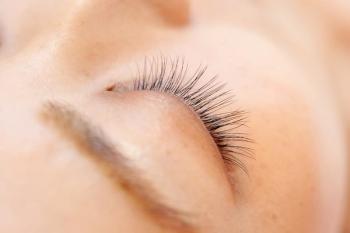
AAOpt 2024: Lotilaner's effectiveness in the treatment of Demodex blepharitis
Ian Ben Gaddie, OD, FAAO, outlines key findings from a recent study evaluating lotilaner in patients with Demodex blepharitis and meibomian gland dysfunction.
According to Ian Ben Gaddie, OD, FAAO, Demodex blepharitis is one of the largest unmet needs in eye care. In an exclusive interview with Optometry Times, he overviews a presentation he gave on a clinical trial evaluating lotilaner (Xdemvy) in the treatment of patients with Demodex blepharitis at the American Academy of Optometry 2024 meeting in Indianapolis, Indiana.
Video transcript:
Editor's note: The below transcript has been lightly edited for clarity.
Ian Ben Gaddie, OD, FAAO:
Hi, Dr Ben Gaddie from Louisville, Kentucky, here, and I'm proud to present the data from our Phase 2b clinical trial on Demodex blepharitis patients and MGD with the treatment of lotilaner. To start, to set this up, Demodex blepharitis is one of the largest unmet needs in eye care. Before basically a year ago, we had no effective or FDA indicated or approved treatment for a condition that affects nearly 60% of all individuals in an eye care practice. So what we started to notice clinically when we would treat Demodex blepharitis is that patients' lids would not only look better, but their eyes felt better. And so what this study aimed to do was to see if people that had Demodex blepharitis, who also had MGD, how they would respond, both from a collarette blepharitis standpoint, but also, could we improve the function of their meibomian glands? So the study was 2 separate arms, 2 separate trials, really. It was load lotilaner, and it was dosed either twice a day or 3 times a day for 6 weeks.
And then we had a separate study just on the vehicle, looking at the same outcome measures, and what we found is about 57% of patients that have a collarette have MGD. And that's a pretty big number. If you think about it, that's a lot of patients, and the importance of MGD is really at the forefront of our profession right now, everything that you see from different treatment options and the work and the science of MGD has really exploded. So we think this is an important development. During the trial, we saw improvements in symptoms, and that's something we've never really had in a pivotal clinical trial, is symptoms with Demodex, and we were able to show that redness, burning, itching and fluctuating vision, most importantly, had a significant improvement in 6 weeks using Xdemvy. And we also saw what we typically see with Xdemvy and Demodex blepharitis: we saw significant improvement in the reduction of collarettes, consistent with what we saw in the Phase 3 clinical trials, but we also saw an improvement in the number of glands secreting meibum, as well as the quality of that meibum that was being excreted.
Key takeaways, Demodex blepharitis and MGD are very commonly associated with each other. We think that Demodex mites do harbor inside of the meibomian glands and contribute to meibomian gland disease. And we've been able to show with a 6 week trial of Xdemvy, of lotilaner, that patients are having improvements in their meibomian gland secretions, the quality of their secretions, as well as a significant reduction in Demodex blepharitis colorettes, as well as redness, which is a primary issue that we see amongst patients with ocular surface disease. Then finally, fluctuating vision is one of the hallmark symptoms that we see with all of ocular surface disease, not just MGD, not just blepharitis, so to be able to improve that really improves the quality of the vision and the life of our patients.
Newsletter
Want more insights like this? Subscribe to Optometry Times and get clinical pearls and practice tips delivered straight to your inbox.

















































.png)


